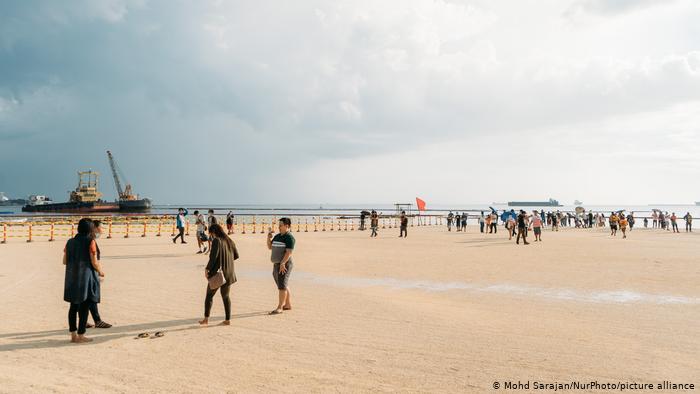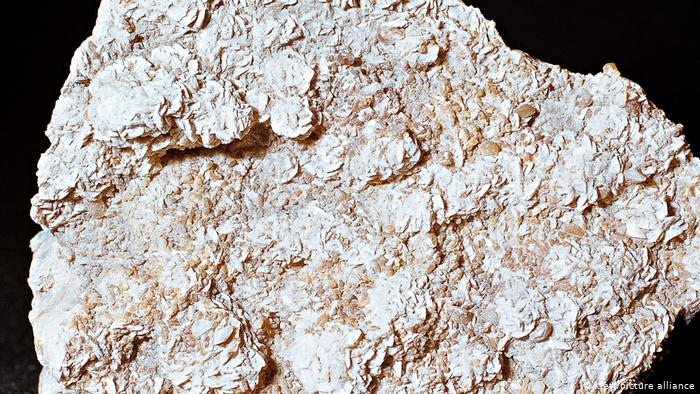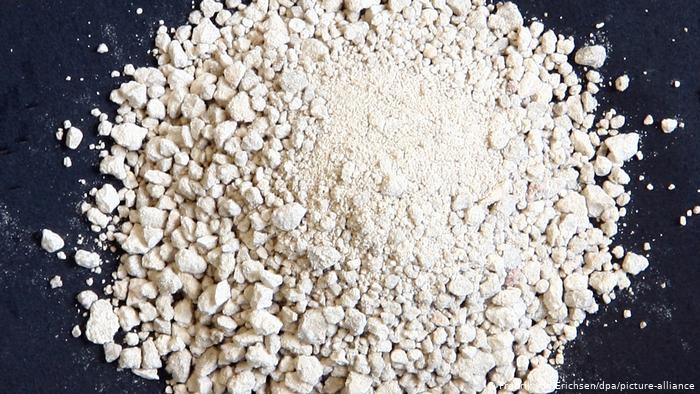An artificial beach strip in Manila Bay has environmentalists up in arms. Scientists warn its dolomite sand could harm people's health and marine wildlife.
A stretch of coastline in the Philippine capital Manila has received backlash from environmentalists. The heavily polluted Manila Bay area, which had been slated for cleanup, has become the site of a controversial 500-meter stretch of white sand beach.
The beach, however, is anything but clean, environmentalists say.
"It's an illusion," said Lia Mai Torres, Executive Director of the Center for Environmental Concerns Philippines. "Just because it's white it doesn't mean it's clean."
The white sand is actually crushed dolomite sourced from a mine in Cebu in the Central Philippines.
Using sand made from dolomite rock in such a project is highly uncommon, experts say. The large majority of sand beaches worldwide are made up of quartz and feldspar, while dolomite sand is commonly used in road construction.
"I have never come across any beach nourishment with dolomite sand," said Arnaud Vander Velpen who's the monitoring and innovation lead in UNEP/GRID-Geneva's Department on Sand Monitoring and Governance.
Sand makeup crucial for ecosystems
While UNEP/GRID-Geneva generally supports finding alternative sources of sand so as not to disrupt ecosystems in rivers and oceans when extracting them, Vander Velpen stressed it was vital to use sand which closely matches the makeup of the native sand to protect beach fauna.
"If you change the core characteristics of the native sand, the original sand, you need to do an environmental impact assessment (EIA) to find out how it's going to impact the ecosystem and nearby ecosystems," he told DW.
But according to Torres, such an assessment was not done in Manila.


Beautification stunt instead of proper cleanup?
Manila Bay's waters are heavily polluted by oil and trash from nearby residential areas and ports. A huge no swimming sign warns visitors to stay away from the ocean.
The Department of Environment and Natural Resources (DENR) denies dolomite sand poses any risk to human health and the ecosystem.
However, scientists of the University of the Philippines have come forward disputing the DENR's claims.
A statement by the Institute of Biology said that using crushed dolomite did not address any of the rehabilitation phases and instead was "even more detrimental to the existing biodiversity as well as the communities in the area," pointing to the case of waterbirds.
"The dumping of dolomite in Manila Bay has effectively covered part of the intertidal area used by the birds thereby reducing their habitat."
At peak migration season, Manila Bay is home to 90 waterbird species, including species of international conservation concern that are facing a very high extinction risk in the wild.
Authorities should focus on protecting and conserving biodiversity, they added. "Rehabilitating mangroves is an example of a nature-based solution that is cheaper and more cost-effective than the dolomite dumping project," the scientists said.


Moreover, the Marine Science Institute warned prolonged inhalation of finer dust particles of dolomite could "cause chronic health effects," leading discomfort in the chest, shortness of breath and coughing.
They also warned dolomite sand grains would erode during storms and be carried out to sea, essentially being washed away.
Rehabilitation vs. reclamation
Environmentalists say covering up the beach doesn't address the real issues of the bay. Torres and others believe the best way to clean up Manila Bay was not to add anything, but rather remove trash and pollution.
"There have been studies saying much of the waste comes from already collected waste — so these are open dump sites along the coast that get washed up because of the rain," Torres said.
She criticized the authorities for continuing to push reclamation projects she says are at odds with each other. These projects will affect large areas of mangrove forests, she said – and experts warn that this, in turn, exacerbates coastal erosion.
"If you've removed the areas that helped trap the sand, like mangrove forests, then the likelihood increases that you will have to nourish a beach. Same as building right up to the waterfront," UNEP/GRID-Geneva's Vander Velpen said.
Plenty of sand in the sea?
The question of Manila's contentious white beach echoes larger questions about sand mining worldwide. Global sand consumption has tripled over the past two decades, UNEP/GRID-Geneva has found. A huge chunk of it is now taken up by construction.
"Many operate on the assumption that natural sand is endless in its supply," Vander Velpen said.

Sand scarcity is a concern shared by Stefan Schimmels of Forschungszentrum Küste who's done extensive research on shore nourishment to stop coastal erosion. And as climate change and rising sea levels are threatening coasts, demand for sand will grow even more.
A large study looked at Strategies and Tools for Environment-Friendly Shore Nourishments as Climate Change Impact Low-Regret Measures (STENCIL project) with a focus on the German island of Sylt, a popular vacation spot.
About one million cubic meter of sand per year is used to maintain the coastal area of Sylt, STENCIL project head Schimmels said. That's about 100 million 10-liter buckets of sand.
When sand was extracted off the coast of Sylt, underwater craters were formed. "You can still detect these craters even decades later," Schimmels told DW.
"Also when you add a couple of meters sand onto the beach – you essentially bury all things that do creep and fly. How quickly will they recover?" He said more research was needed as there was still too little known about long-term effects on the environment.
Criticism piling up
As for Manila's artificial white sand, it looks like some of it might have already blown away by a recent storm. DENR claims it was not washed away, but greyish sand, stones and other materials simply piled up over the dolomite sand. People in Manila tweeted photos that showed how the storm had ravaged the beach.
The authorities have been called tone-deaf for spending around 389 million pesos ($8 million; €6.8 million) on a beach nourishment project in the middle of a raging pandemic.
An image of cake iced with the words "It really hurts - that's [worth] 389 million pesos?" has since gone viral.
"It's just a waste of precious resources," Torres said.
The environmental activist now also worries that she might be labeled a terrorist for speaking out under the Philippines' controversial new anti-terrorism law. She says she could be arrested for inciting fear when talking about environmental dangers.
Latest Stories
-
EBID wins the Africa Sustainability Award
54 seconds -
Expansion Drive: Takoradi Technical University increases faculties
4 hours -
SHS heads demand payment of outstanding funds before reopening of schools
5 hours -
We thank God for the 2024 general elections – Akufo-Addo
5 hours -
Coconut Grove Beach Resort marks 30 years of excellence with memorable 9 lessons & carols service
5 hours -
WAFU B U-17 Girls’ Cup: Black Maidens beat Nigeria on penalties to win inaugral tournament
6 hours -
Real Madrid beat Sevilla to keep pressure on leaders Atletico
7 hours -
Liverpool put six past Spurs to go four points clear
7 hours -
Manchester United lose 3-0 at home to Bournemouth yet again
7 hours -
CHAN 2024Q: ‘It’s still an open game’ – Didi on Ghana’s draw with Nigeria
7 hours -
CHAN 2024Q: Ghana’s Black Galaxies held by Nigeria in first-leg tie
8 hours -
Dr Nduom hopeful defunct GN bank will be restored under Mahama administration
9 hours -
Bridget Bonnie celebrates NDC Victory, champions hope for women and youth
9 hours -
Shamima Muslim urges youth to lead Ghana’s renewal at 18Plus4NDC anniversary
10 hours -
Akufo-Addo condemns post-election violence, blames NDC
10 hours

